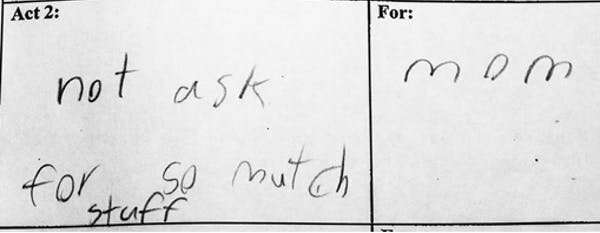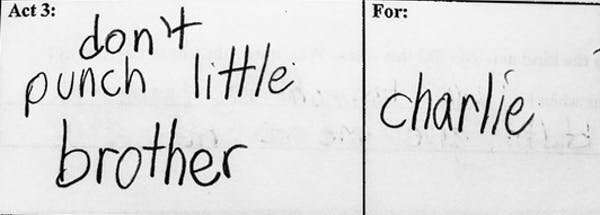
I’ve learned a lot from the thousands of public school students I’ve asked about kindness.
As a researcher at the University of British Columbia, a great deal of my time is spent asking children, adolescents and even university students what it means to be kind and how they demonstrate kindness. Children can be kind in predictable or anticipated ways (for instance, holding a door open for a stranger) but I’ve also learned that they’re kinder than we might think and their kindness takes many forms.
As our society navigates this coronavirus pandemic and we hear with increasing emphasis how important it is to stay home, I reflect on what might be gained by remembering what I came to define as “quiet kindness.”
Such acts of kindness don’t draw attention to the initiator or aren’t announced to the recipient, who may very well remain unaware of the kindness performed on their behalf. For children, an act of quiet kindness does not garner the attention of any adults who might typically encourage or reinforce kindness.
Self-regulation
Quietly kind acts contrast what psychology researchers Gustavo Carlo and Brandy Randall termed “public pro-social behaviours,” which are conductedin front of an audience to gain approval.

I arrived at a definition of quiet kindness after examining younger children’s (kindergarten to Grade 3) drawings and explanations of how they were kind, and older students’ (grades 4 to 7) written descriptions. They shared acts of kindness like leaving money in the vending machine for the next patron, not laughing at a joke or insult if it’ll cause someone around them to suffer—or as one middle school student described—not asking “for so much stuff.”
Some of these quiet acts reflect self-regulation, a hot-topic concept among educators. Children’s self-regulation relates to children and adolescents taking responsibility for their language and actions by self-governing.
For example, one student described an act of kindness within the context of his family: to self-restrain and enact less aggression toward his brother.
These acts of quiet kindness require what psychologists call “perspective-taking”—the ability to gain perspective by putting oneself in the shoes of the other. It has been argued that perspective-taking is a key prerequisite to being kind.
Certainly, we’re best able to tailor our acts of kindness to the needs of those around us when we see from others’ points of view. In doing so, we can reflect upon how our kindness might support those around us.


Done on the down-low
During this time of coronavirus social distancing and quarantine, we’ve ample time to reflect on the needs of others. I hear the call: “But what about MY needs?!” as I think about people standing in line for toilet paper at Costco.
One antidote to maintaining our well-being during this unprecedented time might be to reflect on others’ needs and devise ways to be quietly kind? We know that being kind to others is a guaranteed way to bolster our well-being.
We feel better when we’re kind to others and the added bonus is that we make others feel better too.
It could be as simple as the student’s example below who said “not leaving his stuff laying on the floor” was an act of kindness for his mom and himself. I hope these examples might inspire us to consider a variety of ways to be quietly kind. Maybe this means sharing space more mindfully right now with those we live with or being more diligent with social distancing.
Source: Read Full Article